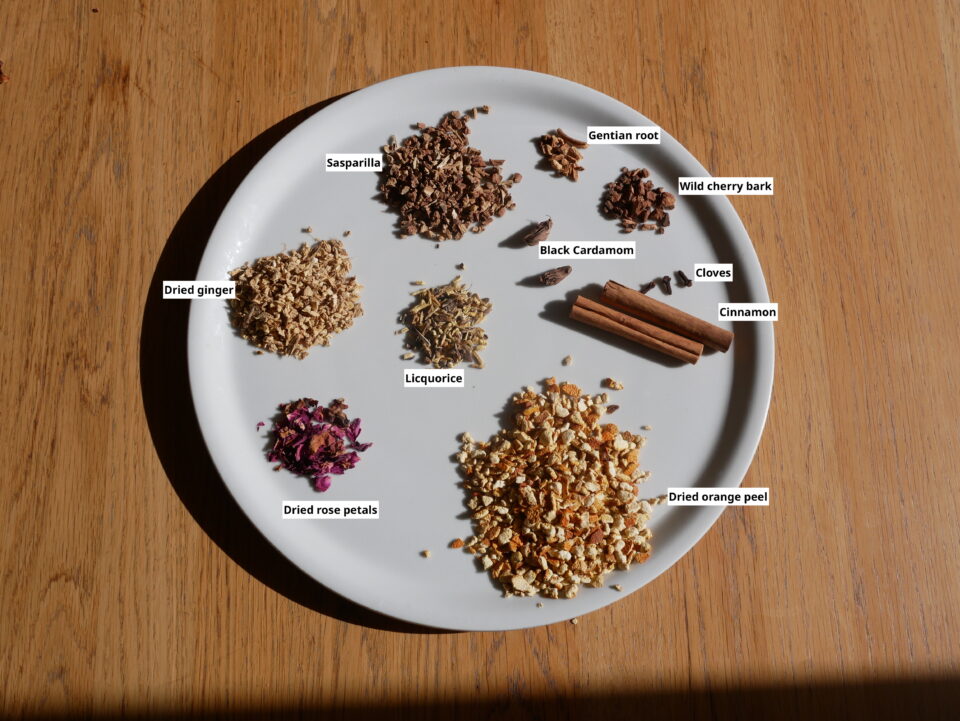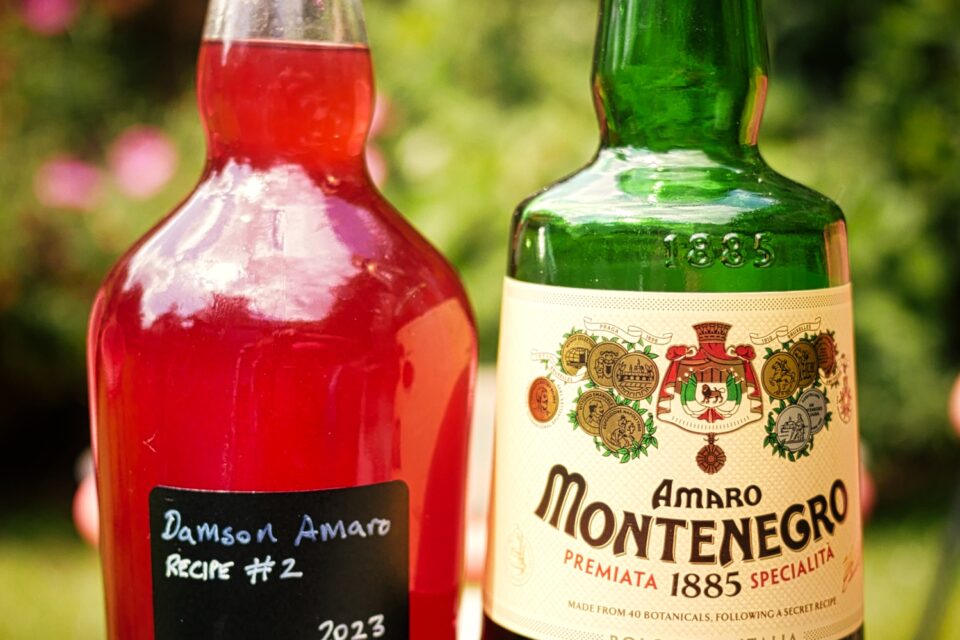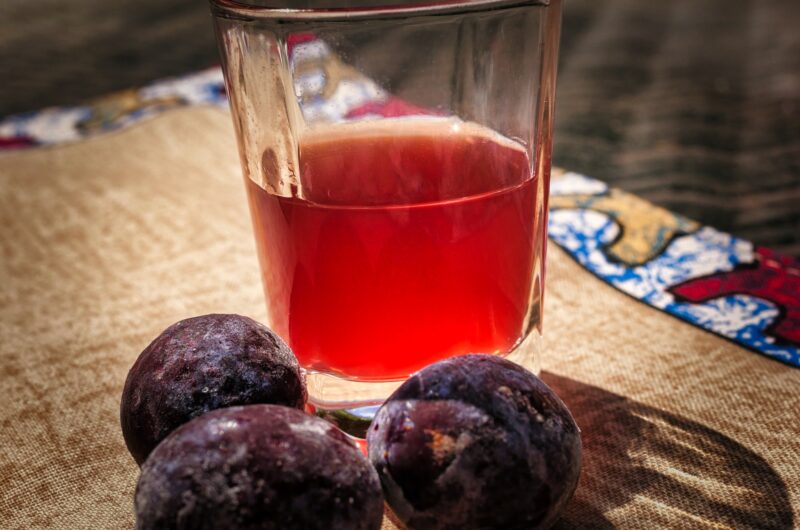My first attempt at damson amaro was a great experience, but the resulting drink is a bit bitter and one or two notes really dominate. With that first one I was going for quite a powerful, spicy, after-dinner shot as a digestif. An altogether different style is the sweeter, almost cola-flavoured Amaro Montenegro from Bologna, one of the most famous amaro’s.

I’d been studying the fastidious and comprehensive collection of research collated in reverblueflame‘s Build Your Own Amaro google sheet, via the r/Amaro reddit. What’s below is a combination of the “felsina” recipe from the “medium/cola” category, with the damsons from my garden. From the original recipe I omitted the dried apricots as I figured the damsons would add a similar contribution. Nor did I bother tracking down horehound. I’m much happier with this result, although as a sweeter drink to sip rather than a bracing shot, but I’ll wait and see how popular it is with friends.
Compared to the real Amaro Montenegro, this is a very straightforward process. Any genuine amaro worth its salt has a mystique around the origin story and the recipe, and Montenegro is no different. Originally called Elisir Lungavita by the originator Stanislao Cobianchi, it was re-named after Princess Elena of Montenegro in 1896, and has been made by a series of master herbalists ever since. Apart from 40 botanicals (some of which are known) and a multi-step process, there is a highly concentrated and top secret final ingredient called “Il Premio”. There are only 6 people working at the Montenegro facility, split between Teramo and Bologna for security reasons, and only one with access to all areas – the current master hebalist, Matteo Bonoli.
One new technique required for this recipe is clarification. Some ingredients will cause a cloudiness or milkiness. Apparently the essential oils in the orange peels could be the culprits here, forming an emulsion when the water (in the sugar syrup) is added. This happens famously when adding water to Ouzo and other anise-flavoured drinks and so is called the “Ouzo effect” or louche effect. The instructions below suggest the use of pectolase (pectic enzyme). This is a protein that breaks down the fruit pectin and helps clear the haze.
Montenegro is a popular cocktail ingredient, so I look forward to trying my damson version in a few of these, like the M&M with mezcal, or the Monte Paloma with tequila and grapefruit, or indeed a negroni with the damson vermouth.
Damson amaro recipe, Amaro Montenegro style
A complex, tasty, medium sweet amaro recipe using damsons, sasparilla, ginger, orange peel, cherry bark and a bunch of other flavourings.
Ingredients
375ml 70% Grain spirit
- Botanicals
12g Sasparilla
10g Dried ginger
20g Dried orange peel
3g Dried liquorice
2g Dried rose petals
2 quills Cinnamon
2 Black cardamom pods
3 Cloves
1 tsp Wild cherry bark
½ tsp Gentian root
- Syrup
200g demerara sugar
700ml water
- Fruit
300g damsons
- Clarification
¼ tsp Pectolase
Directions
- Maceration
- Mix the grain spirit with the botanicals in a sealed jar and leave somewhere cool and dark
- After around 6 days, filter through fine cheesecloth and discard the botanicals
- Gently warm the sugar and water to make a syrup where the sugar is dissolved, and allow to cool
- Mix the syrup, the spirit and the damsons in a larger sealed container and shake
- Leave for at least 2 months
- Clarification
- At this stage I had 1100ml of amaro that was quite hazy, likely due to the orange peels
- Dissolve ¼ tsp of pectolase in 2 tbsp water and mix. If you have a different amount of liquid adjust accordingly, the pectolase instructions say 1 tsp of pectolase dissolved in ½ liquid per gallon to be clarified
- Add the pectolase mixture to the amaro
- Leave for around 3 days. You should see a powdery looking sediment that has formed and, although not crystal clear, the amaro should look brighter
- Carefully pour off the amaro from the top and filter. I used a triple filter of fine cheesecloth and a coffee filter. Leave the last 2cm or so of liquid and discard, but just keep an eye to not bring across the sediment
- Bottling
- That’s it – bottle it up and enjoy – it should keep in a cool place
Notes
- There’s lots of information about different techniques for clarification so you may want to try others, or add additional pectolase perhaps.
- You can buy many of the botanical ingredients at BuyWholeFoodsOnline. I use this grain neutral spirit and Youngs Pectolase.

